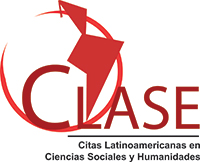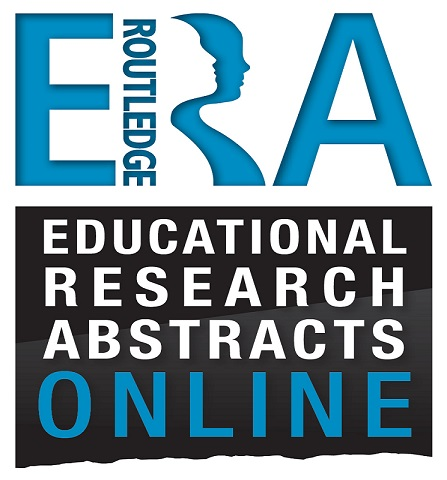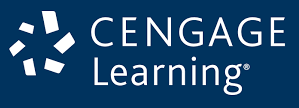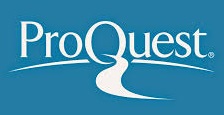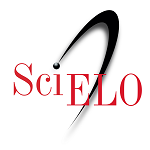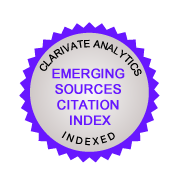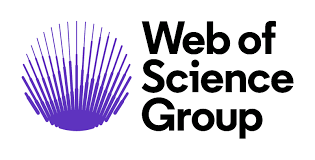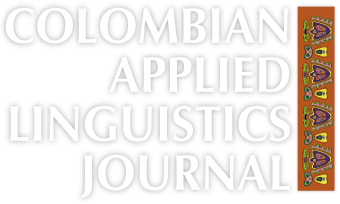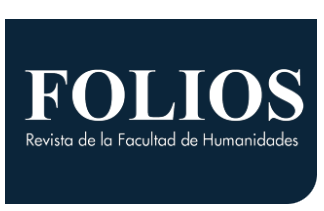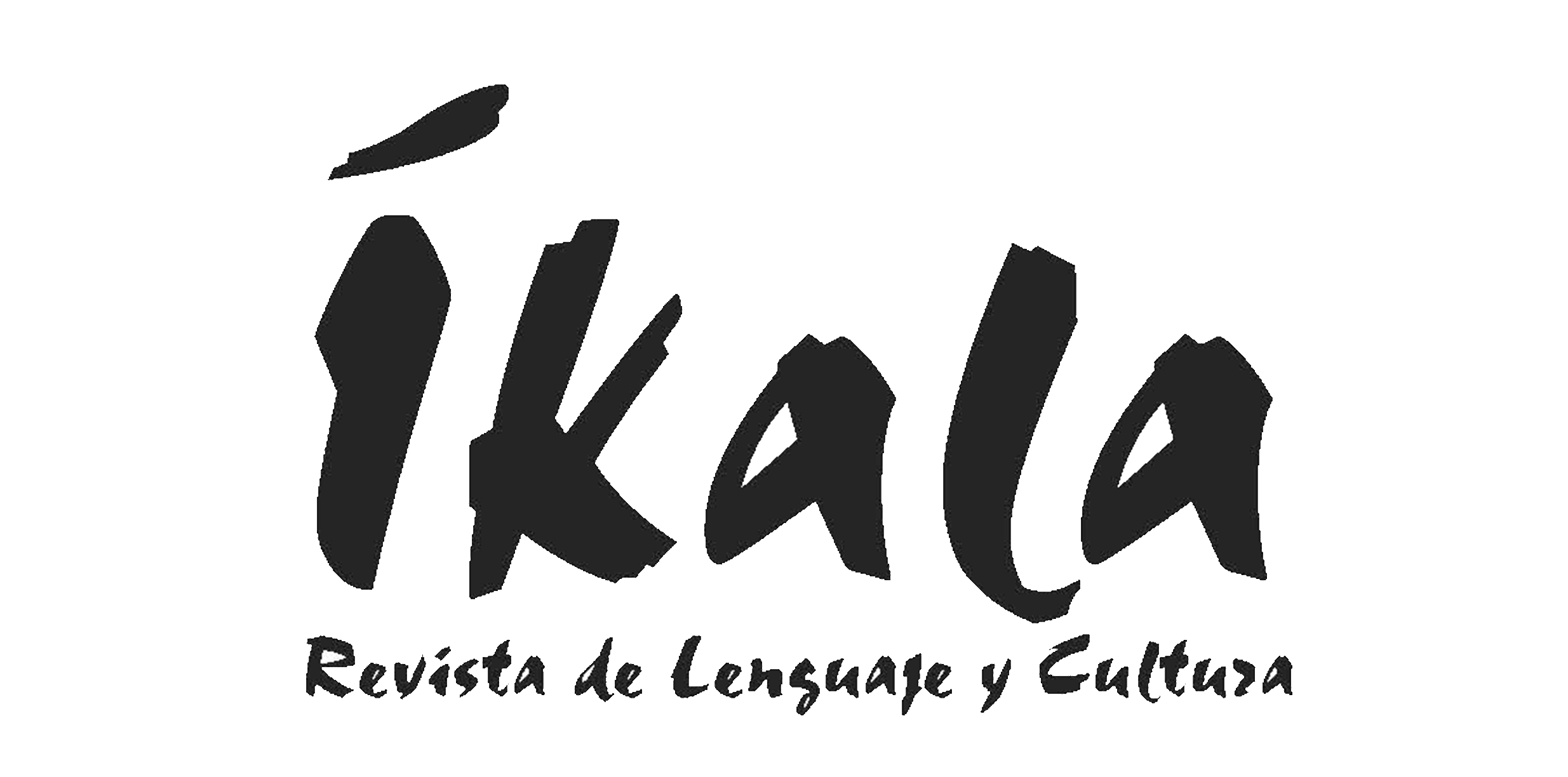Improving Language Learning Strategies and Performance of Pre-Service Language Teachers Through a CALLA-TBLT Model
Mejoramiento de las estrategias de aprendizaje y desempeño en inglés de profesores en formación en idiomas a través del modelo académico-cognitivo y basado en tareas para el aprendizaje de lenguas
DOI:
https://doi.org/10.15446/profile.v19n2.57581Keywords:
learning strategies, task-based language teaching, tertiary education (en)aprendizaje basado en tareas, educación terciaria, estrategias de aprendizaje (es)
This paper reports an action-research study on language learning strategies in tertiary education at a Colombian university. The study aimed at improving the English language performance and language learning strategies use of 33 first-year pre-service language teachers by combining elements from two models: the cognitive academic language learning approach and task-based language teaching. Data were gathered through surveys, a focus group, students’ and teachers’ journals, language tests, and documentary analysis. Results evidenced that the students improved in speaking, writing, grammar, vocabulary and in their language learning strategies repertoire. As a conclusion, explicit strategy instruction in the proposed model resulted in a proper combination to improve learners’ language learning strategies and performance.
https://doi.org/10.15446/profile.v19n2.57581
Improving Language Learning Strategies and Performance of Pre-Service Language Teachers Through a CALLA-TBLT Model
Mejoramiento de las estrategias de aprendizaje y desempeño en inglés de profesores en formación en idiomas a través del modelo académico-cognitivo y basado en tareas para el aprendizaje de lenguas
Maria Eugenia Guapacha Chamorro*
Luis Humberto Benavidez Paz**
Universidad del Valle, Cali, Colombia
*maria.guapacha@correounivalle.edu.co
**luis.benavidez@correounivalle.edu.co
This article was received on May 21, 2016, and accepted on December 2, 2016.
How to cite this article (APA, 6th ed.):
Guapacha Chamorro, M. E., & Benavidez Paz, L. H. (2017). Improving language learning strategies and performance of pre-service language teachers through a CALLA-TBLT model. PROFILE Issues in Teachers’ Professional Development, 19(2), 101-120. https://doi.org/10.15446/profile.v19n2.57581.
This is an Open Access article distributed under the terms of the Creative Commons license Attribution-NonCommercial-NoDerivatives 4.0 International License. Consultation is possible at http://creativecommons.org/licenses/by-nc-nd/4.0/.
This paper reports an action-research study on language learning strategies in tertiary education at a Colombian university. The study aimed at improving the English language performance and language learning strategies use of 33 first-year pre-service language teachers by combining elements from two models: the cognitive academic language learning approach and task-based language teaching. Data were gathered through surveys, a focus group, students’ and teachers’ journals, language tests, and documentary analysis. Results evidenced that the students improved in speaking, writing, grammar, vocabulary and in their language learning strategies repertoire. As a conclusion, explicit strategy instruction in the proposed model resulted in a proper combination to improve learners’ language learning strategies and performance.
Key words: learning strategies, task-based language teaching, tertiary education.
Este artículo versa sobre una investigación-acción en estrategias de aprendizaje en educación terciaria en una universidad colombiana. El estudio buscaba mejorar el desempeño en inglés y el uso de estrategias de aprendizaje de 33 profesores en formación en idiomas de primer año al combinar elementos de dos modelos: enfoque cognitivo y académico para el aprendizaje de lenguas y aprendizaje basado en tareas. Los datos se recolectaron a través encuestas, un grupo focal, diarios de los profesores y estudiantes, pruebas de inglés y análisis documental. Los resultados revelaron el mejoramiento de los estudiantes en la oralidad, escritura, gramática, vocabulario y en el desarrollo de estrategias de aprendizaje. Como conclusión, la instrucción explícita en estrategias dentro del modelo propuesto resultó ser una adecuada combinación para mejorar el desempeño en lengua y en estrategias de aprendizaje de los estudiantes.
Palabras clave: aprendizaje basado en tareas, educación terciaria, estrategias de aprendizaje.
Introduction
Language learning strategies (LLS) have played an influential role in language learners’ learning process (Chamot, 2009; Cohen, 2014; Cohen & Macaro, 2007; Oxford, 1990, 2013; Rubin, 1975); also, explicit LLS instruction enhances learners’ academic success (Ehrman & Oxford, 1995; Oxford & Nyikos, 1989). Furthermore, language instructors interested in inquiring into their students’ learning preferences, in fostering the use of LLS, and in orienting an effective foreign language learning (L2) instruction might contribute to their students’ academic success (Oxford, 1990). Language tasks have also shown to be effective in the teaching of languages and in fostering LLS (Chamot, 2009).
Based on these premises, as language instructors in a Bachelor of Arts in Foreign Languages programme, we embarked on this study to provide our first-year pre-service language teachers with tools that will enhance their learning process and future teaching practices. The study also derives from the scarce LLS research in our language programme. This was reflected in the lack of systematisation of data obtained from questionnaires administered to freshmen, inquiring into their LLS use, study habits, learning styles, and language skills. It was also observed that freshmen’s LLS repertoire was low, and that there was need for explicit LLS instruction in the initial English language courses of the language programme.
This action-research inquiry, therefore, aimed to improve the LLS use and English language performance of 33 first-year pre-service language teachers through the cognitive academic language learning approach (CALLA) and task-based language teaching (TBLT) methodology. The findings from this research serve as a diagnosis for the students involved in this study and for the language programme; therefore, curriculum improvements are suggested. Pedagogical implications on how to integrate LLS instruction with language tasks to enhance language teaching and learning are offered. These research questions were posed:
Main research question: To what extent do first-year pre-service teachers improve their LLS repertoire and language skills through the CALLA-TBLT models?
Specific research questions:
- What are the students’ most and least used LLS?
- What are the students’ strengths and weaknesses in language skills?
- What types of tasks and learning resources will help these students improve their language performance and LLS use?
Literature Review
For over 40 years, extensive research has shown the key role of LLS in L2 instruction (Cohen, 2014; Cohen & Macaro, 2007; Griffiths, 2003, 2015; O’Malley & Chamot, 1990; Oxford, 2013; Oxford & Schramm, 2007; Rubin & Thompson, 1994). However, there is still need for further research (Cohen & Griffiths, 2015; Griffiths, 2015; Oxford, 2013), more qualitative studies (Griffiths & Oxford, 2014), and more implementation of TBLT with LLS (Macaro, 2014) informing the field with new findings.
Language Learning Strategies
There have been significant attempts to define LLS. We strived, however, to condense the concept as a set of specific, systematic, and deliberate actions and thoughts that enhance learners’ performance and make their learning more effective through varied language learning tasks (Chamot, 2009; Griffiths, 2013; O’Malley & Chamot, 1990; Oxford, 1990, 2013). Self-management (Rubin, 2001), learner strategies (Cohen & Macaro, 2007; Wenden & Rubin, 1987), and self-regulation (Dörnyei, 2005; Zimmerman, 2002) are alternative terms to learning strategies, being specific actions that learners take on their own to enhance their learning. For Macaro (2006), self-regulation is a more versatile term. Self-regulation entails learners’ autonomy (Allwright, 1990; Holec, 1981), which in turn includes motivation (Zimmerman, 2002), decision making, and control of their own learning experience.
For this study, we stick to our working definition on LLS since strategy is a useful concept referring to how learners address their learning (Griffiths, 2015). Moreover, we consider that explicit instruction develops students’ greater metacognition and understanding of their own learning process when they establish connections between the strategies they use with their effectiveness (Chamot, 2009). We also believe that learners self-regulate and develop autonomy once they have gained certain maturation and experience with LLS.
Taxonomies of Language Learning Strategies
LLS have originated several taxonomies (O’Malley & Chamot, 1990; Oxford, 1990, 2013; Wenden & Rubin, 1987). The differences are determined by the selected number of strategies, sub classifications, and distinct research methods used to group them more comprehensibly and accurately. Although a broad number of LLS have been proposed, language learners choose the strategies that fit their age, gender, cultural background, personality, proficiency, language learning needs and interests, and learning styles (Chamot, 2009; Cohen, 2014; Oxford, 2013). We adopted Oxford’s (1990) LLS taxonomy since it has been widely used in LLS research, making this classification valid and reliable. The model offers a detailed classification of direct and indirect strategies that can be intertwined with language tasks. Oxford’s set of strategies leads to specific outcomes. Although the author proposes a new LLS classification in her updated strategic self-regulated (S2R) language learning model (Oxford, 2013), she still suggests that learning strategies are teachable and that learners select the ones that address their learning purposes. Further research might explore this new taxonomy.
Oxford’s (1990) taxonomy integrates LLS with language skills (reading, writing, speaking, listening, grammar, and vocabulary). The author classifies 62 LLS into two types: direct and indirect strategies. Direct strategies (DS), subdivided into memory, cognitive, and compensation strategies, involve the learners’ mental processing of the target language. Indirect strategies (IS), subdivided into metacognitive, affective, and social strategies, foster learners’ language learning without directly involving the target language. Table 1 presents Oxford’s (1990) LLS taxonomy.
The Combined Model: Cognitive Academic Language Learning Approach and Task-Based Language Teaching
A proper combination of LLS instruction and language teaching methodology is essential to ensuring that effective instruction impact learners’ language performance. Furthermore, strategy instruction should be tailored to the students’ needs and contexts in order to be effective (Richards & Lockhart, 1994; Wenden, 1991). Although diverse LLS instruction models have been proposed (Chamot, 2009; Grenfell & Harris, 1999; O’Malley & Chamot, 1990; Oxford, 1990), all of them emphasise a continuous cycle introducing or modelling the strategy, generating contextualised practice, self-monitoring and evaluating the learners’ progress, and expanding the strategies to new areas or tasks.
Language tasks have been useful to integrate both strategies and language instruction (Chamot, 2009; Oxford, 1990). For this study, the CALLA strategy model (Chamot, 2009) was implemented due to its flexibility and sequential cycles, allowing learners to select their preferred strategy and practise it within contextualised activities. tbtl methodology was selected since it is a holistic and interactional language teaching and learning approach, favouring learner-centred instruction (Ellis, 2009; Willis, 1996). Within TBLT, tasks, through sequential cycles and elaborated sequences of tasks, based on real-world language, allow learners to use the target language for a communicative purpose in order to achieve an outcome (Van den Branden, 2006; Willis, 1996). Tasks also involve students’ awareness of how to learn and what strategies to select while doing a learning task (Nunan, 2004). Thus, both CALLA and TBLT are compatible in their principles, leading learners to improve language and their LLS repertoire through contextualised activities.
Chamot (2009) states that “CALLA is an instructional model designed to meet the academic needs of English language learners” (p. 1) through five cycles: preparation, presentation, practice, self-evaluation, and expansion. CALLA incorporates task-based learning strategies for learners to accomplish learning tasks. Willis’ (1996) TBLT framework was adopted. Its three cycles, pre-task, task, and language focus, coincide with the five CALLA cycles. Willis’ (1996) task typology (listing, ordering and sorting, comparing, problem-solving, sharing personal information, and creative tasks) were implemented in this design. Figure 1 illustrates the combined CALLA-TBLT model.
The pre-task cycle in TBLT andthe preparation and presentation cycles in CALLA identify students’ prior knowledge which is linked to the new topic. Teachers introduce the learning goals (tasks and strategies) and provide models of both task and strategy. Techniques such as brainstorming are used to recall and elicit information. The task cycle in TBLT and practice in CALLA involve students’ practice of the target language and learning strategy through cooperative learning activities. The task cycle is subdivided into three stages (task, planning, and report) in which students complete the task (individually, with peers, or in groups). Students plan, organise, practise, and report the task to the class and receive feedback (from peers and/or teacher). Practice in CALLAinvolves students practicing the strategy.
The last cycles, language focus in TBLT and self-evaluation and expansion in CALLA, encompass assessment of the students’ learning progress and independent work. Language focus is subdivided into analysis and practice. The former leads students to examine specific features of the target language derived from the task; the latter encourages students to practise using the language in other contexts. In CALLA self-evaluation makes students reflect upon their learning process, and expansion invites them to apply their new knowledge into other contexts.
Empirical Studies
There has been extensive research on LLS worldwide. For instance, Tuckman and Kennedy (2011) reported the effectiveness of eight LLS in the freshmen’s performance of a Midwestern university after explicit LLS instruction in a psychology course. Del Ángel Castillo and Sessarego Espeleta (2013) explored the LLS most frequently used by successful English language learners at a Chilean University. The results revealed that cognitive strategies were more frequently used than metacognitive strategies by successful learners. In Colombia, Orrego and Díaz Monsalve (2010) explored the concept of learning held by language instructors and first-year pre-service language teachers of a B.A. in foreign languages programme, and the frequency of LLS used by these students. Findings yielded that the concept of learning differs from learners and instructors, and that similar LLS were used by the students in English and French language courses.
In our workplace, Hernández Gaviria (2008) explored the LLS that first-year students in an English language course used naturalistically. The findings yielded that the students understood the importance of LLS in their learning process; however, students’ autonomy development needed to be fostered. Although strategies such as goal setting, planning, compensation, and transferring were not considered by the students, they were able to identify their strengths and weaknesses, particularly those related to their linguistic knowledge. They also monitored and assessed their learning and generated, mainly, oral practice opportunities while the writing skill required more guidance.
Ramírez Espinosa (2015) designed an English language course syllabus to foster students’ autonomy. The author suggests ten steps that contribute to an effective language course design impacting language teaching and learning. The steps include a context diagnosis, students’ autonomy profile identification, learner-training workshops, self-access materials design, needs analysis, a course syllabus plan, students’ interests and goals inclusion, an assessment plan, TBLT approach implementation, students’ class involvement and contribution, feedback and peer-evaluation inclusion, and journals use. Although all these studies contribute to the field of LLS with valuable findings, our study makes a difference in its research design, provides explicit LLS instruction covering a good number of strategies, and adopts CALLA for strategy instruction and TBLT for language teaching.
Method
Setting and Participants
The study was conducted with 33 first-year pre-service teachers from two classes (16 and 17 students respectively) during two academic semesters in English language course I and II in a B.A. in Foreign Languages (English-French) programme at Universidad del Valle, Colombia. These sequential language courses followed an integrated skills syllabus approach and were each scheduled three times a week with a two-hour class session. The subjects’ ages ranged from 16 to 26. A great percentage had studied in public schools. Only a few students had initiated a major before. They manifested different language learning interests and evidenced an A1 English language level, according to the Common European Framework of Reference (Council of Europe, 2001) and to the English language course II. These students were selected since they were freshmen who needed support in their LLS development from the outset and because they were teachers-to-be for whom this knowledge is essential.
Research Design
Unlike extensive quantitative large-scale research conducted worldwide, this study reports an action research (Creswell, 2012) by gathering quantitative and qualitative data. Cardona, Fandiño, and Galindo’s (2014) design was adopted. This design consists of two cycles:
Cycle 1:
- Observation: Students’ profile, language level, and LLS use and needs identification in diagnostic stage.
- Planning: LLS selection and tasks and learning resources design based on the students’ needs.
- Intervention: CALLA-TBLT implementation.
- Reflection and evaluation: on-going assessment of the students’ improvement.
Cycle 2:
- Planning: new LLS, tasks and learning resources design and integration.
- Intervention: new LLS, tasks and learning resources implementation.
- Reflection and evaluation: evaluation and analysis of LLS, tasks and learning resources impact.
Data Collection Instruments and Analysis
Data were gathered through surveys, a focus group, students’ and teachers’ journals, language tests, and documentary analysis, which are instruments used to document the students’ LLS use and improvement (Chamot, 2005; Oxford, 1990). Table 2 presents the research stages, objectives, and data collection instruments.
Data were analysed both quantitatively and qualitatively. Colour coding was used to categorise data in all the instruments, using Oxford’s (1990) LLS taxonomy. Language tests provided numeric scores.
Results and Discussion
Diagnostic Stage
What are the students’ most and least used LLS? A focus group, surveys, and documentary analysis answered this research question reported in Table 3. Shaded boxes represent the least used.
Table 3 shows that 68% of the 62 specific strategies were not used by the students. It is understandable that these freshmen were not familiar with many strategies that would benefit their overall learning. However, an adequate number (32%) between DS and IS were found as the most used, meaning that they were possibly taught before or used naturistically by these students based on their learning styles and purposes. The students used more IS than DS. This suggests a certain level of awareness and reflection on their learning process. Within the metacognitive group (IS), centring your learning was the most used strategy, revealing that the students made connections between prior and new information, paid attention to their process, and focused on listening. Songs comprised the learning resources most used by the students, as reported in the focus group and surveys. Songs were used to practice pronunciation and increase vocabulary and linguistic structures. It is usual that beginners centre their learning on songs and on the listening skill, diverting their attention from other academic resources and language skills that may enrich their linguistic knowledge.
Although listening provides input and practice opportunities, it is necessary to make students notice that “language cannot be approached mechanically and in isolation” (Rubin & Thompson, 1994, p. 40). The least used strategies, within this metacognitive group, were the learners’ arrangement and the planning and assessment of their learning process, which reflects the students’ inexperience in directing their learning. The common use of affective (encourage yourself) and social strategies (cooperating and empathising with others) reflected the students’ enthusiasm for their process, interacting with others, taking risks, working collaboratively and cooperatively, and tolerating differences. All which are overriding factors that might help them cope with the challenges that language learning entails. The focus group and surveys indicated that learners required strategies that help them lower their anxiety and feel confident when taking language tests or giving presentations.
The most used DS, cognitive strategies (practising, receiving and sending messages,and creating structure for input and output) provide learners with opportunities to develop receptive and productive skills. Since memory and compensation strategies were the least used, it might explain the students’ anxiety and low confidence level. These strategies facilitate the students’ recall and organisation of information easily, enrich their vocabulary, and help them overcome limitations when speaking. All in all, the fact that these students did not use all the LLS at all times does not necessarily mean that they were not good learners (Rubin & Thompson, 1994) or that their learning was not effective (Chamot, 2009; Oxford, 2013); nevertheless, if they had implemented more specific and systematic strategies, their academic process could have been more effective.
What are the students’ strengths and weaknesses in language skills? The focus group, surveys, and diagnostic language test answered this research question. The students’ self-perception informed that while listening was their main strength, reading, speaking, grammar, and vocabulary represented their weaknesses. The language test, however, indicated that speaking was the students’ strength (Figure 2). This was an accumulative test which evaluated the students’ four language skills plus grammar and vocabulary in a separate component. It was administered to the 321 students at the end of the first semester. The results served as a diagnosis of their language level. The test results are presented as high scores (4-5) and low scores (0-3.9) of a grading scale from 0 to 5.
According to Figure 2, the students performed better in speaking, contrary to what they reported in the surveys and focus group. Although the students manifested a low confidence level in speaking, the researchers’ observations reported their good language command during the speaking tasks. Moreover, the oral production emphasis in the syllabus and the extensive practice during the course may have influenced the students’ positive results. Listening was considered the students’ strength; however, the language test showed that only 45% of the students achieved good scores in this skill. It might be that listening to songs does not guarantee high achievement in listening tasks.
Throughout the English language Course I, the students were exposed to audios different from songs, such as long conversations and interviews by native speakers. These tasks might have been different from the students’ purposes and more challenging since they were required to identify explicit and implicit information and specific patterns and discourse. Thus, more practice, use of thought-provoking resources, and awareness of varied functions and contexts of listening were necessary. Reading, grammar-vocabulary, writing, and listening represented the students’ weaknesses. The first three skills were also confirmed by the students. It could be that reading, grammar-vocabulary, writing, and listening are complex skills, demanding the students’ use of specific strategies to achieve better results, or they might not represent the students’ interests. From these results, we could interpret that the students’ perceptions of their own strengths and weaknesses are distant from their actions and outcomes.
Intervention and Evaluation Stages
After having diagnosed the students’ strengths and weaknesses in LLS use and language skills, we designed tasks and resources that addressed both strategies and language. In the intervention stage, 33 out of 62 strategies were selected based on (a) the diagnostic stage yielding the least used LLS by the students, (b) their relevance to our students’ learning foundations, and (c) their applicability to the course contents and language tasks. Cognitive, affective (only encourage yourself),and social strategies were included despite the students’ common use in order to give them a more academic purpose. Lowering your anxiety and taking your emotional temperature were not included since the language programme offers students psychological support. Table 4 illustrates the selection and integration of the LLS with language skills and three instruments (notebook, journal, and portfolio) used by the students to document their learning process. The students followed the instructors’ guidelines to organise their notes, record their process, and arrange hand-outs.
Three workshops were designed integrating CALLA and TBLT (see the Appendix for a workshop sample). Eleven strategies were introduced in three four-week workshops based on the three syllabus topics: childhood and teenage stages, turning points in life, and the neighbourhood. The selected tasks and resources were crucial in the LLS instruction and the students’ LLS adoption and learning improvement. The following section presents the findings of the students’ tasks and learning resources preferences.
What types of tasks and learning resources will help these students improve their language performance and LLS use? The researchers’ and the students’ journals and the final survey answered this third research question, summarised in Table 5.
It is evident that the students preferred oral tasks to literacy tasks. This preference might be related to the students’ desire of getting input through conversations and interviews and to practising the language. The preferred listening tasks and audio-visual materials engaged the students in identifying general and specific information, summarising, classifying, and reporting descriptions, interviews, narratives, and documentaries. The images and videos supported the students’ listening comprehension. As to speaking, class discussion on different topics, presentations, and projects helped them improve their fluency, pronunciation, and self-confidence.
Although there was balance in all language skills instruction, reading and writing were the least preferred. We might interpret that tasks involving the students’ experiences are more engaging than reading and writing tasks that may be more challenging for them, this being a probable cause to avoid them. Grammar and vocabulary, through dynamic classroom activities using techniques such as miming, total physical response, and visual aids at the beginning and end of each workshop, were well received by the students. These activities and materials activated the students’ memory, grouping, and association of words, and reinforced their prior learning. Grammar worksheets were preferred to online grammar activities. This might be explained for the hand-outs features designed by the instructors, which provided clear explanations and contextualised examples. These materials are generally different and more challenging than the ones students usually consult on their own. Their choice might reflect that the students raised awareness and established criteria to select appropriate resources. Online thesaurus dictionaries were disregarded; instead, Google translator was consulted more. The students might have chosen this resource for its practicality and accessibility, ignoring the usefulness of thesaurus dictionaries as an academic tool in expanding their lexicon.
The students preferred activities and materials that increased their language knowledge to reflective and introspective tools that could contribute to their self-assessment. In five journals and surveys students affirmed that portfolios did not contribute to their learning and did not reflect any outcome. The fact that the students did not deem journal and portfolios as their favourite tools probably means that they were not used to reflecting on their own process, writing in journals, organising materials, and adopting new and challenging tasks. It might be that previous school practices failed to train students in the use of reflective strategies. This is a matter of raising awareness gradually through explicit LLS instruction in further courses.
The researchers’ observations, however, reported the value of the portfolio and its contribution to the students’ organisation, fulfilment of assignments, autonomy when consulting extra sources, and transference of strategies to other areas. This result may have been influenced by the fact that the portfolio was graded, so the students met the requirement.
To what extent do first-year pre-service teachers improve their LLS repertoire and language skills through the CALLA-TBLT models? The researchers’ and the students’ journals, final survey, documentary analysis, and language tests yielded the students’ areas of improvement in LLS and language skills. The final survey indicated that 79% of the students found LLS useful for their academic process, 3% found them redundant, and 18% did not answer. The reasons for using them were paraphrased:
- To study, take notes, recall info and clarify doubts.
- To be organised at home and in class.
- To acquire info and classify vocabulary easily.
- To improve the learning process.
- They fit the learning style and study habits.
- To develop critical thinking.
- To be more reflective towards learning.
- They motivate to review their lessons.
- Classes are more enjoyable
And the reasons for not considering them useful were:
- They generate pressure.
- They are not practical.
- They require time and effort.
- They do not fit their learning style
Sixty-six percent of the students stated that they transferred the strategies to other subjects (French, Spanish composition, English pronunciation, and morphology classes); this was corroborated in eight notebooks and six portfolios in which the students attached evidence voluntarily. Table 6 summarises the findings of all instruments of the second stage. The shaded boxes indicate the LLS used systematically by the students.
Table 6. LLS Used Systematically by the Students (Instruments, Second Stage)
To summarise, the students increased their LLS repertoire and it seems that the explicit instruction influenced this result. Both DS and IS increased in a balanced way: DS = 63.2% (12 out of 19 instructed strategies) and IS = 61.54% (8 out of 13). As to DS, the students incorporated memory strategies (43.74%, 325/743 occurrences) and continued using cognitive strategies (53.2%, 395/743 occurrences). This means that the students gained experience in using strategies that helped them organise and recall information easily as well as analysing the language more consciously. However, compensation strategies were not widely adopted by the students, similar to Hernández Gaviria’s (2008) finding. A possible cause was their low language level (beginners) and low oral interactions. Students also incorporated IS (249/361 = 69%), predominantly metacognitive strategies which are useful for planning, reflecting, and evaluating their learning. The least used strategies were self-monitoring and self-evaluating, which require students’ introspection and appraisal of their own learning. It could be that the students rely more on the teachers’ assessment than on their self-assessment.
Concerning the students’ language level, the two language tests administered to the students in the second semester, which corresponded to the midterm and final term tests, were used to measure the students’ improvements. The three tests (diagnostic, mid, and final term) were comparable in the sense that they assessed the students’ four language skills and grammar and vocabulary in a separate component, using communicative tasks. However, their level of complexity was adjusted to the course and students’ levels. Figure 3 compares the results of the three tests.
Figure 3 illustrates that speaking remained as the students’ main strength, and that writing improved, followed, to a lesser extent, by grammar-vocabulary. Our interpretation is that the course emphasis on oral interaction and the students’ motivation to speak in English might have influenced this result. Moreover, the students’ preferred tasks (sharing experiences, problem solving, creative tasks, listing, and comparing) and strategies (practicing naturalistically, setting goals, planning for a language task, and cooperating with peers and proficient users) might have enhanced this language skill. The students’ writing skill might have been enhanced by the academic emphasis and purposes of the language course, even when writing tasks were not highly preferred by them. Strategies such as semantic mapping and planning for a language task helped them structure their writing and oral presentations.
The students’ grammar and vocabulary improvement might be associated with memory games, vocabulary slides, and grammar worksheets as their preferred learning resources. Also semantic mapping, using keywords, grouping, associating, structured reviewing,and using physical response strategies might have influenced this result. It could also be that the grammar-vocabulary component was more difficult in the final test; that is why a low percentage of students achieved higher results. On the other hand, listening and reading decreased. The students’ low improvement could offer varied interpretations. It might be that these language skills still represent more of a challenge for the students, they might not represent their interests, or the final test language tasks were more difficult. It might be also associated with the fact that reading tasks and resources were not the most preferred by the majority of the students.
Conclusions
This study attempted to improve the LLS use and language level of 33 first-year pre-service language teachers. The overall results showed that our learners increased their LLS repertoire and language production level as a result of explicit instruction. Before the intervention, students used more IS, and after the instruction both DS and IS use were balanced. The students incorporated strategies that involved their language knowledge and their capacity to organise, select, plan, self-reflect, and self-manage their learning. The latter two were not fully developed. Speaking remained the students’ strength and writing and grammar-vocabulary improved. Listening was the students’ main weakness found in the language tests as opposed to their self-perceptions.
Communication and interaction tasks such as sharing experiences, problem-solving, creative tasks, and listing showed to be effective in improving the students’ productive skills. Grammar worksheets, vocabulary slides, audio-visual materials, and portfolios (the latter from the teachers’ perspectives) resulted as having been useful resources contributing to the students’ language learning, particularly when designed by language instructors who base their designs on the students’ academic needs. Additionally, structured notes (dates, titles, use of colours and columns, use of sticky notes) seem to contribute to learners’ organisation and information recall. Concrete strategies also lead to reachable learning goals and outcomes.
The CALLA-TBLT model seemed to be effective in explicit LLS instruction, leading to students’ improvement of speaking, writing and grammar, and vocabulary. These approaches follow similar principles and, when intertwined, facilitate LLS and language tasks instruction. Despite its short-term implementation, it was effective for these students; nevertheless, the CALLA-TBLT model efficacy requires further confirmatory research. Language learners, especially pre-service language teachers, need explicit LLS instruction from initial levels so that they can build their own scaffolding system for learning languages and have that experience useful for their future teaching practices. Thus, LLS should be incorporated into the curriculum and the language courses syllabi, as well as tailored to the students’ needs. LLS are teachable and transferable to other subjects but students may require some time to internalize and use them on their own.
Overall, a careful selection of LSS, language tasks, learning resources, and appropriate strategy and language instruction results in being effective in improving students’ LLS use and language performance. This instruction is effective when considering the students’ needs. Our findings confirm the effectiveness of LLS to help learners succeed academically, as demonstrated by theoretical and empirical research. The findings also confirm Tuckman and Kennedy’s (2011) findings of the effectiveness of LLS and their explicit instruction to improve freshmen’s performance. Ramírez Espinosa’s (2015) suggestions on the features that make English language courses effective to foster learners’ academic success were also corroborated.
Limitations and Recommendations
The limitations of our study bring about recommendations for further research. Fewer strategies should be selected and worked over a longer period of time to corroborate their effectiveness and learners’ language improvement. This is also to not overwhelm learners. Combining checklists with free journal entries might help students self-monitor and evaluate more closely their own progress thus allowing instructors to keep track of and measure the students’ achievements more accurately. Task complexity in language tests should be comparable so as not to affect the students’ test results (in our study, the final language test was probably more complex than the midterm test). Oxford’s (1990) taxonomy is ambiguous at some points since some activities can fit into various strategies. We suggest, therefore, establishing specific criteria and sticking to them.
1One student was absent.
References
Allwright, D. (1990). Autonomy in language pedagogy (CRILE Working Paper 6). Lancaster, UK: Centre for Research in Education, University of Lancaster.
Cardona, A., Fandiño, Y., & Galindo, J. (2014). Formación docente: creencias, actitudes y competencias para el uso de TIC [Teacher education: Beliefs, attitudes, and competences for the use of ICT]. Lenguaje, 42(1), 173-208.
Chamot, A. U. (2005). Language learning strategy instruction: Current issues and research. Annual Review of Applied Linguistics, 25, 112-130. http://doi.org/10.1017/s0267190505000061.
Chamot, A. U. (2009). The CALLA handbook: Implementing the cognitive academic language learning approach (2nd ed.). White Plains, US: Pearson-Longman.
Cohen, A. D. (2014). Strategies in learning and using a second language (2nd ed.). London, UK: Routledge.
Cohen, A. D., & Griffiths, C. (2015). Revisiting LLS research 40 years later. TESOL Quarterly, 49(2), 414-429. http://doi.org/10.1002/tesq.225.
Cohen, A. D., & Macaro, E. (Eds.). (2007). Language learner strategies: Thirty years of research and practice. Oxford, UK: Oxford University Press.
Council of Europe. (2001). Common European Framework of Reference: Learning, teaching, and assessment. Oxford, UK: Oxford University Press.
Creswell, J. W. (2012). Qualitative inquiry and research design: Choosing among five approaches. London, UK: Sage Publications.
Del Ángel Castillo, M. C., & Sessarego Espeleta, I. E. (2013). Strategies used by successful English learners in a Chilean university. Matices en Lenguas Extranjeras, 7, 23-39.
Dörnyei, Z. (2005). The psychology of the language learner: Individual differences in second language acquisition. Mahwah, US: Lawrence Erlbaum Associates.
Ehrman, M. E., & Oxford, R. L. (1995). Cognitive plus: Correlations of language learning success. The Modern Language Journal, 79(1), 67-89. http://doi.org/10.1111/j.1540-4781.1995.tb05417.x.
Ellis, R. (2009). Task-based language teaching: Sorting out the misunderstandings. International Journal of Applied Linguistics, 19(3), 221-246. http://doi.org/10.1111/j.1473-4192.2009.00231.x.
Grenfell, M., & Harris, V. (1999). Modern languages and learning strategies: In theory and practice. London, UK: Routledge.
Griffiths, C. (2003). Patterns of language learning strategy use. System, 31(3), 367-383. http://doi.org/10.1016/S0346-251X(03)00048-4.
Griffiths, C. (2013). The strategy factor in successful language learning. Bristol, UK: Multilingual Matters.
Griffiths, C. (2015). What have we learnt from ‘good language learners’? ELT Journal, 69(4), 425-433. http://doi.org/10.1093/elt/ccv040.
Griffiths, C., & Oxford, R. L. (2014). The twenty-first century landscape of language learning strategies: Introduction to this special issue. System, 43, 1-10. http://doi.org/10.1016/j.system.2013.12.009.
Hernández Gaviria, F. (2008). Aprendizaje estratégico: un camino al aprendizaje autorregulado [Strategic learning: A path towards self-regulated learning]. Cali, CO: Universidad del Valle.
Holec, H. (1981). Autonomy and foreign language learning. Oxford, UK: Pergamon.
Macaro, E. (2006). Strategies for language learning and for language use: Revising the theoretical framework. The Modern Language Journal, 90(3), 320-337. http://doi.org/10.1111/j.1540-4781.2006.00425.x.
Macaro, E. (2014). Reframing task performance: The relationship between tasks, strategic behaviour, and linguistic knowledge in writing. In H. Byrnes & R. Manchón (Eds.), Task-based language learning: Insights from and for L2 writing (pp. 53-77). Amsterdam, NL: John Benjamins Publishing. http://doi.org/10.1075/tblt.7.03mac.
Nunan, D. (2004). Task-based language teaching. Cambridge, UK: Cambridge University Press. http://doi.org/10.1017/CBO9780511667336.
O’Malley, J. M., & Chamot, A. U. (1990). Learning strategies in second language acquisition. Cambridge, UK: Cambridge University Press. http://doi.org/10.1017/CBO9781139524490.
Orrego, L. M., & Díaz Monsalve, A. E. (2010). Empleo de estrategias de aprendizaje de lenguas extranjeras: inglés y francés [Use of foreign language learning strategies: English and French]. Íkala, Revista de Lenguaje y Cultura, 15(24), 105-142.
Oxford, R. L. (1990). Language learning strategies: What every teacher should know. Rowley, US: Newbury House Publishers.
Oxford, R. L. (2013). Teaching and researching: Language learning strategies. London, UK: Routledge.
Oxford, R., & Nyikos, M. (1989). Variables affecting choice of language learning strategies by university students. The Modern Language Journal, 73(3), 291-300. http://doi.org/10.1111/j.1540-4781.1989.tb06367.x.
Oxford, R. L., & Schramm, K. (2007). Bridging the gap between psychological and sociocultural perspectives on L2 learner strategies. In A. D. Cohen & E. Macaro (Eds.), Language learner strategies: Thirty years of research and practice (pp. 47-68). Oxford, UK: Oxford University Press.
Ramírez Espinosa, A. (2015). Fostering autonomy through syllabus design: A step-by-step guide for success. HOW, 22(2), 114-134. http://doi.org/10.19183/how.22.2.137.
Richards, J. C., & Lockhart, C. (1994). Reflective teaching in second language classroom. New York, US: Cambridge University Press. http://doi.org/10.1017/CBO9780511667169.
Rubin, J. (1975). What the “good language learner” can teach us. TESOL Quarterly, 9(1), 41-51. http://doi.org/10.2307/3586011.
Rubin, J. (2001). Language learner self-management. Journal of Asian Pacific Communication, 11(1), 25-37. http://doi.org/10.1075/japc.11.1.05rub.
Rubin, J., & Thompson, I. (1994). How to be a more successful language learner. Boston, US: Heinle & Heinle Publishers.
Tuckman, B. W., & Kennedy, G. J. (2011). Teaching learning strategies to increase success of first-term college students. The Journal of Experimental Education, 79(4), 478-504. http://doi.org/10.1080/00220973.2010.512318.
Van den Branden, K. (Ed.). (2006). Task based language education: From theory to practice. Cambridge, UK: Cambridge University Press. http://doi.org/10.1017/CBO9780511667282.
Wenden, A. (1991). Learner strategies for learner autonomy. London, UK: Prentice-Hall International.
Wenden, A., & Rubin, J. (Eds). (1987). Learner strategies in language learning. Hemel Hempstead, UK: Prentice Hall.
Willis, J. (1996). A framework for task-based learning. New York, US: Longman.
Zimmerman, B. J. (2002). Becoming a self-regulated learner: An overview. Theory into Practice, 41(2), 64-70. http://doi.org/10.1207/s15430421tip4102_2.
About the Authors
Maria Eugenia Guapacha Chamorro is Assistant Professor at Universidad del Valle, Cali, Colombia. Currently, she is a PhD candidate at The University of Auckland (New Zealand). She holds an M.A. in English Teaching and a B.A. in Foreign Languages. She is an EFL instructor and has taught at all educational levels.
Luis Humberto Benavidez Paz is Assistant Professor at Universidad del Valle, Cali, Colombia. He holds an M.A. in Linguistics and Spanish and a B.A. in Foreign Languages. He currently teaches EFL, ESP, EAP, classroom research, and pedagogy. His research interests include interculturality, learning strategies, and curriculum design.
Acknowledgments
We are deeply grateful to the students who participated in this research. Our gratitude goes to professors Orlando Chaves and Carlos Mayora for their insightful comments during the proofreading. We also acknowledge the feedback provided by the anonymous reviewers.
Childhood Memories

Retrieved from Google Images
Pre-task ↔ Preparation and Presentation (4 hours)
LLS: grouping, taking notes, using key words, semantic mapping, placing new words, using a circumlocution, developing cultural understanding.
Task: Students will share childhood anecdotes by using audio visual aids (slides, photos, objects, etc.)
Vocabulary
Learning strategy: grouping
Warm-up and Pre-listening activity
Teachers’ instructions: Divide the class into two groups and play hangman using the words from the box. Have students use them in situations related to the topic.

Pre-listening activity
1. Do you remember how you spent your summer holidays when you were a child?
2. Did you use to travel to visit some relatives or stay at home? What activities did you use to do?
3. What are the most unforgettable moments you remember from that time of your life?
While-listening
Learning strategies: taking notes - using key words - grouping
4. Listen to the conversation between Vella and Daniel and take notes by identifying key words and ideas.
Example: Key words: Grow up in Chile
Idea: Daniel grew up in Chile.
5. Listen again and complete the following diagram with aspects related to childhood and detailed information given in the conversation.

6. Based on your notes and diagram, what can you report about the conversation? How did they spend their childhood holidays?
Post-listening
Learning Strategy: placing new words - using a circumlocution
7. Try to define the key words and expressions from the conversation. You can use a thesaurus dictionary to help you with synonyms.
a. Fond memories: _______________________________________________________
Expression in context: ______________________________________________________
Speaking
Learning Strategy:developing cultural understanding
8. After listening to the conversation, what do you notice about the relationship between seasons and holidays? Discuss with your classmates.
9. Compare the school break that Daniel used to experience with yours when you were a child.
10. Establish similarities and differences between the school breaks in Colombia and in other countries (consider break length, type of leisure activities, food, outfits, celebrations, etc.).
Homework
1. Find out about others’ childhood memories (use internet, talk to the language assistant, ask a native English speaker, a friend, etc.).
2. Interview or have an informal talk with your parents or relatives about their childhood. Take notes to share in class.
References
Allwright, D. (1990). Autonomy in language pedagogy (CRILE Working Paper 6). Lancaster, UK: Centre for Research in Education, University of Lancaster.
Cardona, A., Fandiño, Y., & Galindo, J. (2014). Formación docente: creencias, actitudes y competencias para el uso de TIC [Teacher education: Beliefs, attitudes, and competences for the use of ICT]. Lenguaje, 42(1), 173-208.
Chamot, A. U. (2005). Language learning strategy instruction: Current issues and research. Annual Review of Applied Linguistics, 25, 112-130. http://doi.org/10.1017/s0267190505000061.
Chamot, A. U. (2009). The CALLA handbook: Implementing the cognitive academic language learning approach (2nd ed.). White Plains, US: Pearson-Longman.
Cohen, A. D. (2014). Strategies in learning and using a second language (2nd ed.). London, UK: Routledge.
Cohen, A. D., & Griffiths, C. (2015). Revisiting LLS research 40 years later. TESOL Quarterly, 49(2), 414-429. http://doi.org/10.1002/tesq.225.
Cohen, A. D., & Macaro, E. (Eds.). (2007). Language learner strategies: Thirty years of research and practice. Oxford, UK: Oxford University Press.
Council of Europe. (2001). Common European Framework of Reference: Learning, teaching, and assessment. Oxford, UK: Oxford University Press.
Creswell, J. W. (2012). Qualitative inquiry and research design: Choosing among five approaches. London, UK: Sage Publications.
Del Ángel Castillo, M. C., & Sessarego Espeleta, I. E. (2013). Strategies used by successful English learners in a Chilean university. Matices en Lenguas Extranjeras, 7, 23-39.
Dörnyei, Z. (2005). The psychology of the language learner: Individual differences in second language acquisition. Mahwah, US: Lawrence Erlbaum Associates.
Ehrman, M. E., & Oxford, R. L. (1995). Cognitive plus: Correlations of language learning success. The Modern Language Journal, 79(1), 67-89. http://doi.org/10.1111/j.1540-4781.1995.tb05417.x.
Ellis, R. (2009). Task-based language teaching: Sorting out the misunderstandings. International Journal of Applied Linguistics, 19(3), 221-246. http://doi.org/10.1111/j.1473-4192.2009.00231.x.
Grenfell, M., & Harris, V. (1999). Modern languages and learning strategies: In theory and practice. London, UK: Routledge.
Griffiths, C. (2003). Patterns of language learning strategy use. System, 31(3), 367-383. http://doi.org/10.1016/S0346-251X(03)00048-4.
Griffiths, C. (2013). The strategy factor in successful language learning. Bristol, UK: Multilingual Matters.
Griffiths, C. (2015). What have we learnt from ‘good language learners’? ELT Journal, 69(4), 425-433. http://doi.org/10.1093/elt/ccv040.
Griffiths, C., & Oxford, R. L. (2014). The twenty-first century landscape of language learning strategies: Introduction to this special issue. System, 43, 1-10. http://doi.org/10.1016/j.system.2013.12.009.
Hernández Gaviria, F. (2008). Aprendizaje estratégico: un camino al aprendizaje autorregulado [Strategic learning: A path towards self-regulated learning]. Cali, CO: Universidad del Valle.
Holec, H. (1981). Autonomy and foreign language learning. Oxford, UK: Pergamon.
Macaro, E. (2006). Strategies for language learning and for language use: Revising the theoretical framework. The Modern Language Journal, 90(3), 320-337. http://doi.org/10.1111/j.1540-4781.2006.00425.x.
Macaro, E. (2014). Reframing task performance: The relationship between tasks, strategic behaviour, and linguistic knowledge in writing. In H. Byrnes & R. Manchón (Eds.), Task-based language learning: Insights from and for L2 writing (pp. 53-77). Amsterdam, NL: John Benjamins Publishing. http://doi.org/10.1075/tblt.7.03mac.
Nunan, D. (2004). Task-based language teaching. Cambridge, UK: Cambridge University Press. http://doi.org/10.1017/CBO9780511667336.
O’Malley, J. M., & Chamot, A. U. (1990). Learning strategies in second language acquisition. Cambridge, UK: Cambridge University Press. http://doi.org/10.1017/CBO9781139524490.
Orrego, L. M., & Díaz Monsalve, A. E. (2010). Empleo de estrategias de aprendizaje de lenguas extranjeras: inglés y francés [Use of foreign language learning strategies: English and French]. Íkala, Revista de Lenguaje y Cultura, 15(24), 105-142.
Oxford, R. L. (1990). Language learning strategies: What every teacher should know. Rowley, US: Newbury House Publishers.
Oxford, R. L. (2013). Teaching and researching: Language learning strategies. London, UK: Routledge.
Oxford, R., & Nyikos, M. (1989). Variables affecting choice of language learning strategies by university students. The Modern Language Journal, 73(3), 291-300. http://doi.org/10.1111/j.1540-4781.1989.tb06367.x.
Oxford, R. L., & Schramm, K. (2007). Bridging the gap between psychological and sociocultural perspectives on L2 learner strategies. In A. D. Cohen & E. Macaro (Eds.), Language learner strategies: Thirty years of research and practice (pp. 47-68). Oxford, UK: Oxford University Press.
Ramírez Espinosa, A. (2015). Fostering autonomy through syllabus design: A step-by-step guide for success. HOW, 22(2), 114-134. http://doi.org/10.19183/how.22.2.137.
Richards, J. C., & Lockhart, C. (1994). Reflective teaching in second language classroom. New York, US: Cambridge University Press. http://doi.org/10.1017/CBO9780511667169.
Rubin, J. (1975). What the “good language learner” can teach us. TESOL Quarterly, 9(1), 41-51. http://doi.org/10.2307/3586011.
Rubin, J. (2001). Language learner self-management. Journal of Asian Pacific Communication, 11(1), 25-37. http://doi.org/10.1075/japc.11.1.05rub.
Rubin, J., & Thompson, I. (1994). How to be a more successful language learner. Boston, US: Heinle & Heinle Publishers.
Tuckman, B. W., & Kennedy, G. J. (2011). Teaching learning strategies to increase success of first-term college students. The Journal of Experimental Education, 79(4), 478-504. http://doi.org/10.1080/00220973.2010.512318.
Van den Branden, K. (Ed.). (2006). Task based language education: From theory to practice. Cambridge, UK: Cambridge University Press. http://doi.org/10.1017/CBO9780511667282.
Wenden, A. (1991). Learner strategies for learner autonomy. London, UK: Prentice-Hall International.
Wenden, A., & Rubin, J. (Eds). (1987). Learner strategies in language learning. Hemel Hempstead, UK: Prentice Hall.
Willis, J. (1996). A framework for task-based learning. New York, US: Longman.
Zimmerman, B. J. (2002). Becoming a self-regulated learner: An overview. Theory into Practice, 41(2), 64-70. http://doi.org/10.1207/s15430421tip4102_2.
How to Cite
APA
ACM
ACS
ABNT
Chicago
Harvard
IEEE
MLA
Turabian
Vancouver
Download Citation
CrossRef Cited-by
1. Betty Reyes, Sylvia Georgieva, Sara Martínez-Gregorio, Saturnino de los Santos, Laura Galiana, José M. Tomás. (2021). Evaluación de las estrategias de aprendizaje con las escalas ACRA y ACRA-Breve: Modelos competitivos, invarianza de medida, y predicción del rendimiento académico en estudiantes de secundaria de la República Dominicana. Revista de Psicodidáctica, 26(1), p.1. https://doi.org/10.1016/j.psicod.2020.07.001.
2. Martha García Chamorro, Monica Rolong Gamboa, Nayibe Rosado Mendinueta. (2022). Initial Language Teacher Education: Components Identified in Research. Journal of Language and Education, 8(1), p.231. https://doi.org/10.17323/jle.2022.12466.
3. Fanny Hernández Gaviria, Alexander Ramirez. (2024). Learning Strategies Instruction: A Proposal for Encouraging Autonomous Learners. Colombian Applied Linguistics Journal, 26(1), p.78. https://doi.org/10.14483/22487085.19346.
4. Betty Reyes, Sylvia Georgieva, Sara Martínez-Gregorio, Saturnino de los Santos, Laura Galiana, José M. Tomás. (2021). Assessment of learning strategies with the ACRA and the Brief-ACRA scales: Competitive models, measurement invariance, and prediction of academic achievement in secondary elementary students from the Dominican Republic. Revista de Psicodidáctica (English ed.), 26(1), p.1. https://doi.org/10.1016/j.psicoe.2020.11.005.
5. José Miguel Marenco Domínguez. (2023). Language Learning Strategies Research in Colombia: A Review of the Last 10 Years. LATAM Revista Latinoamericana de Ciencias Sociales y Humanidades, 4(2) https://doi.org/10.56712/latam.v4i2.909.
6. B. Piano Laurejane, Elaine D. Tabilog Maria, J. Vizconde Camilla. (2023). Assessing self-directed English language learning strategies of YouTube content creators. i-manager’s Journal on English Language Teaching, 13(4), p.52. https://doi.org/10.26634/jelt.13.4.20141.
7. Debra Faszer-McMahon. (2019). Engaging Teacher Candidates and Language Learners With Authentic Practice. Advances in Higher Education and Professional Development. , p.186. https://doi.org/10.4018/978-1-5225-8543-5.ch011.
8. Daniel Alirio Cruz Bernal. (2023). Análisis de anuncios publicitarios desde el método calla en el aula EFL. Estudio de caso con estudiantes de secundaria en Colombia.. Enletawa Journal, 16(1), p.1. https://doi.org/10.19053/2011835X.16013.
Dimensions
PlumX
Article abstract page views
Downloads
License
Copyright (c) 2017 PROFILE Issues in Teachers' Professional Development

This work is licensed under a Creative Commons Attribution-NonCommercial-NoDerivatives 4.0 International License.
You are authorized to copy and redistribute the material in any medium or format as long as you give appropriate credit to the authors of the articles and to Profile: Issues in Teachers' Professional Development as original source of publication. The use of the material for commercial purposes is not allowed. If you remix, transform, or build upon the material, you may not distribute the modified material.
Authors retain the intellectual property of their manuscripts with the following restriction: first publication is granted to Profile: Issues in Teachers' Professional Development.













